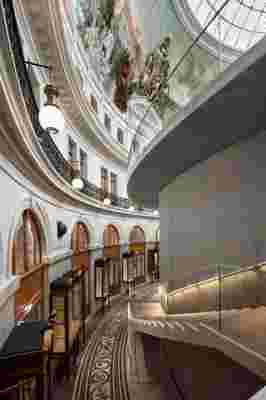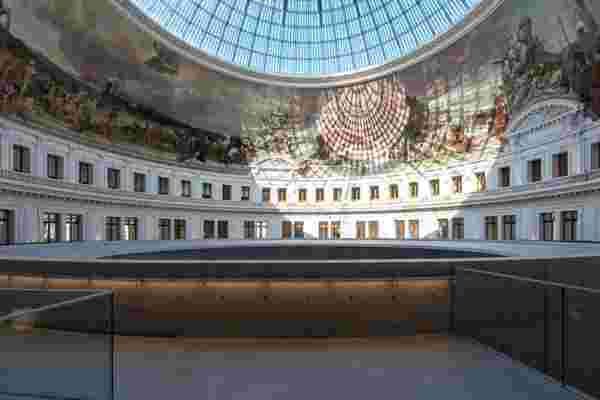Pinault Collection Museum to Open in Paris in January
After some delays caused by the coronavirus pandemic, businessman François Pinault’s extensive collection of contemporary and modern art will unveil its new home in France come 2021. The Bourse de Commerce, the museum designed by Japanese architect Tadao Ando to house and display the Pinault Collection, will open to the public on January 23 of next year. The museum is an architectural conversion of Paris’s former stock exchange building, a circular domed structure built in the mid-18th century as a grain market that is located near two of the city’s most famous art spaces, the Louvre and the Pompidou Centre.
The opening of the Bourse de Commerce—Pinault Collection is highly anticipated, partly because its programming is largely unknown. François Pinault, the CEO and president of luxury goods group Kering (whose brands include Gucci, Saint-Laurent, and Ulysse Nardin and its parent company Artemis), is a blue-chip collector with two other museums under his belt, the Palazzo Grassi and the Punta della Dogana, both in Venice and both by architect Ando. His art collection includes at least 5,000 works by modern and contemporary artists like Louise Bourgeois, Jeff Koons, and Cindy Sherman. “I am delighted with the upcoming opening of the Bourse de Commerce,” says Pinault in a statement. “Not only will it add to the European landscape of institutions devoted to presenting contemporary art, but after the difficult year experienced by France and the world in 2020, it will contribute to the renaissance of the Parisian cultural sphere.”

The museum was once the location of Paris’s former stock exchange building.
The museum’s conversion from stock exchange was completed by Pritzker Prize winner Ando in early March, although the movement of artworks and furniture into the space was halted when France went on national lockdown in the middle of the month. (French duo Ronan and Erwan Bouroullec have designed and selected the furniture for the space.) Under its original glass-and-iron dome, added in 1811, the architect has designed a three-tier concrete structure for circulation and display of art, his signature minimalism inserted within an ornate historic shell. Other period details like its murals, ironwork, and double-helix staircase have been preserved. The museum design is meant to achieve highly flexible and adaptable gallery spaces, arranged around the rotunda core, which will be able to accommodate any medium of contemporary art. “By nesting new spaces within it, while respecting the memories of the city engraved in its walls, I will transform the building’s entire interior into a space for contemporary art,” Ando has said of the design. “The theme here, once again, is to create a building that connects the past with the present and the future.”

A circular domed structure was originally built in the mid-18th century as a grain market.
The Bourse de Commerce—Pinault Collection will contain approximately 32,200 square feet (3,000 square meters) of exhibition space and includes a black box theater and 300-seat auditorium. In its initial announcement in 2016, the museum stated that it will present “thematic hangings of works in the Pinault Collection, monographic exhibitions devoted to major artists, commissions, cartes blanches, and in-situ installations.” Its inaugural show has not yet been announced. Because of the unknown future of COVID-19-era events in France, the museum plans to open over several days, allowing for social distancing if still required.